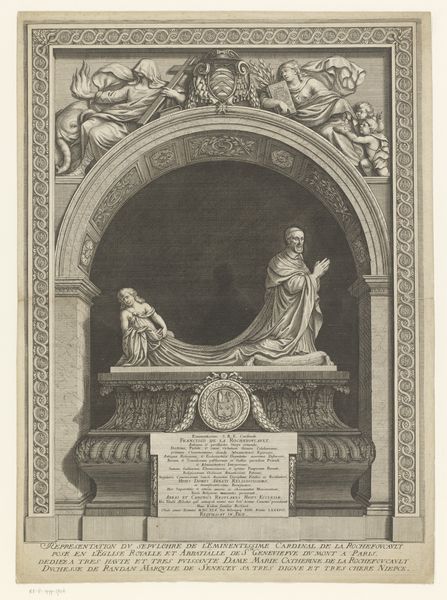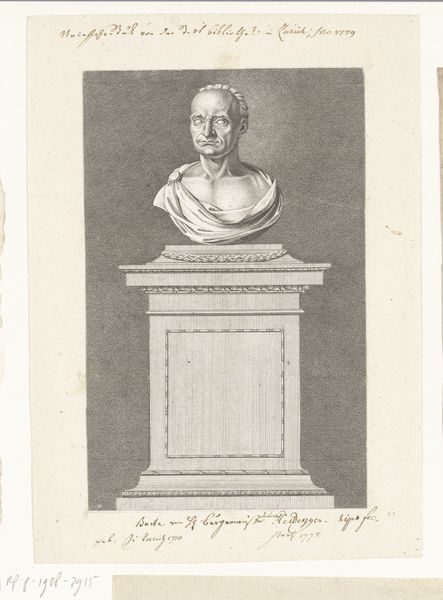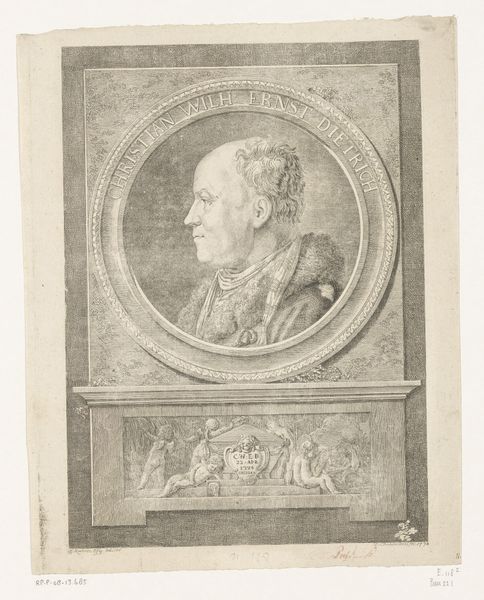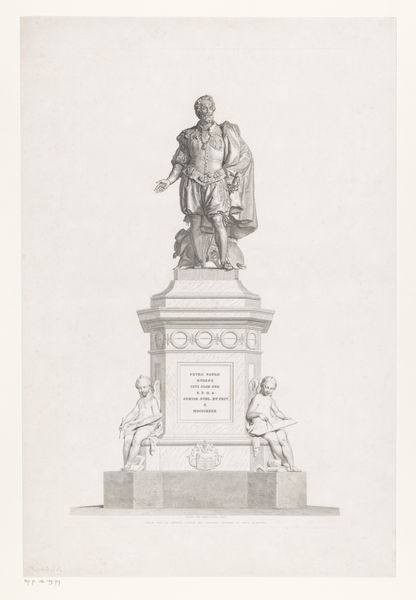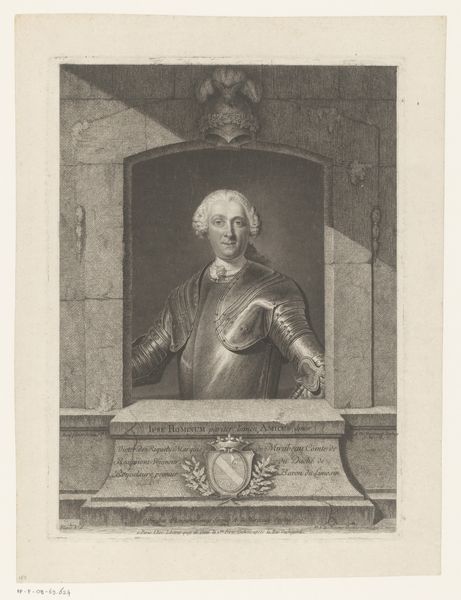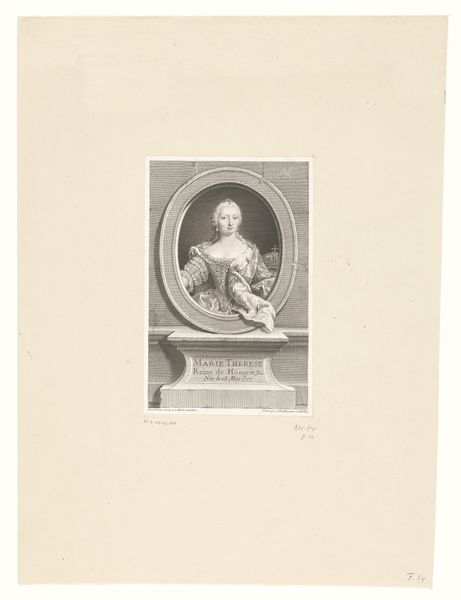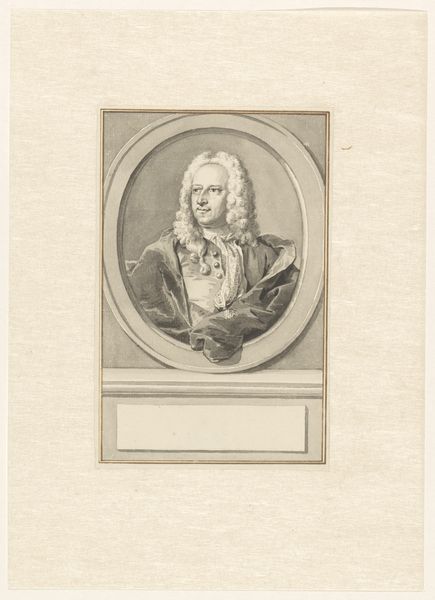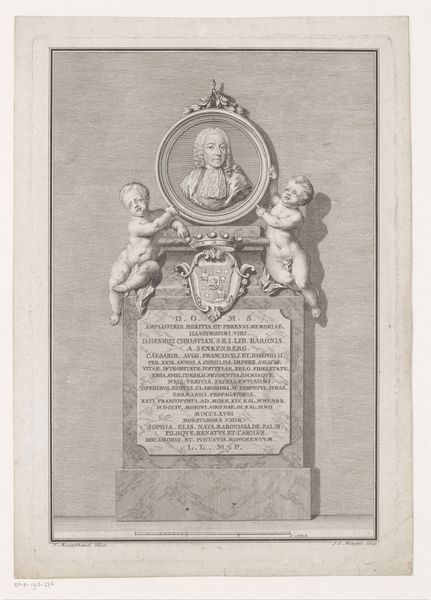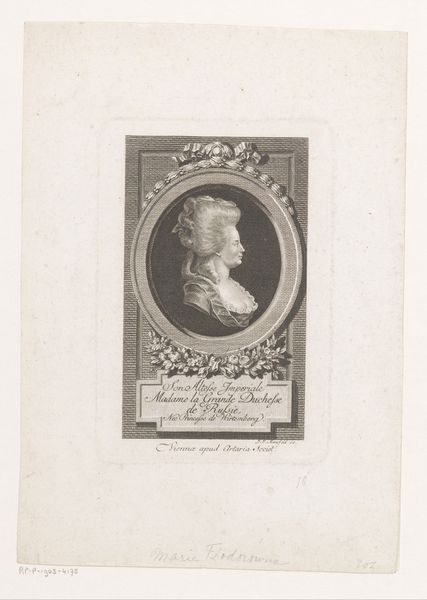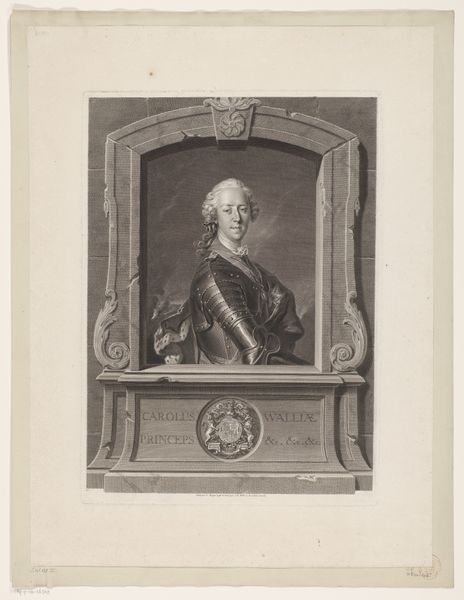
print, engraving
#
neoclacissism
#
statue
# print
#
historical photography
#
classicism
#
19th century
#
history-painting
#
engraving
#
statue
Dimensions: height 576 mm, width 378 mm
Copyright: Rijks Museum: Open Domain
Curator: Here we have an engraving entitled "Monument van keizer Frans II," dating between 1803 and 1832, by Johann Josef Neidl. Editor: It strikes me as exceptionally austere. The pale, gray tonality, the rigid symmetry...it’s like a study in calculated restraint. Curator: Indeed. Observe how the artist employs Neoclassical principles. The composition is meticulously balanced, almost mathematically so. Consider the placement of the bust within the arch, flanked by symmetrical angels. Editor: And consider what this symmetry reinforces— a hierarchy of power. The monument literally elevates Emperor Franz II above the viewer. What sociopolitical context allowed this glorification, even posthumously, in the early 19th century? Curator: Focus, if you will, on the formal elements. Note the precise engraving technique creating a wide variety of line weights in the depiction of textures, from the smooth marble of the bust to the intricate details in the background reliefs. Editor: While the execution displays a high degree of technical skill, one must question what purpose it serves. Are we meant to unquestioningly admire Emperor Franz II, regardless of the inequalities and injustices of his reign? This artwork reinforces the idea that monuments are, at best, problematic artifacts. Curator: Yet isn't the print, in its deliberate construction, a potent visual artifact regardless of subject? Observe the careful calibration of shadow and light, creating depth and volume within a two-dimensional plane. The text on the pedestal, acting almost as an anchor for the composition… Editor: …is a reminder of the elite circles this imagery circulated within. The Latin inscription makes the monument exclusive. Who was the artwork for, who was included, and more importantly, who was not? Curator: I’d suggest we regard it as an interesting technical achievement reflecting particular aesthetics and visual ideas of that period, but, perhaps, the monument is now due to the passage of time, and perspective on its subject, for reassessment. Editor: Perhaps. This piece underscores that engaging with art from the past must never sidestep a critical perspective toward issues of power, privilege, and representation. Only then can historical dialogue occur.
Comments
No comments
Be the first to comment and join the conversation on the ultimate creative platform.
